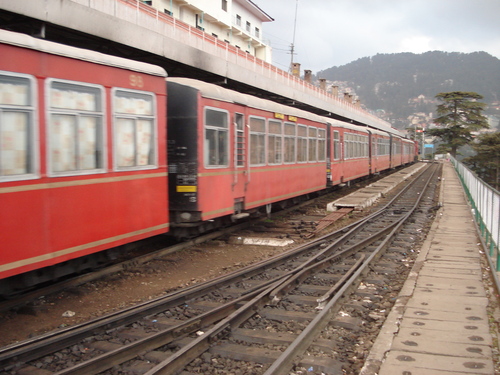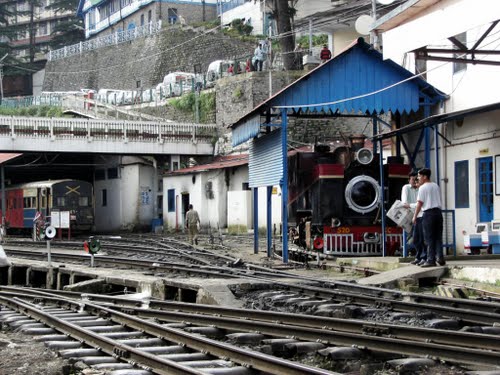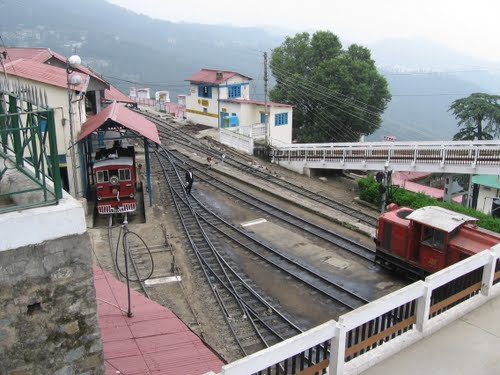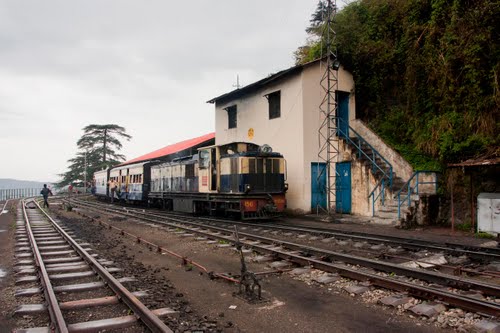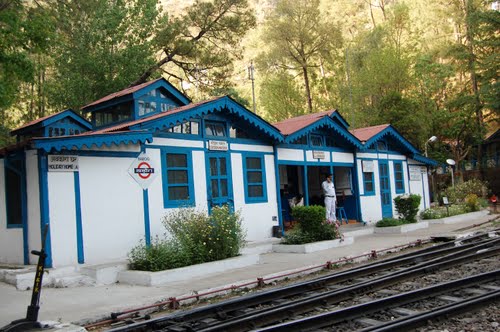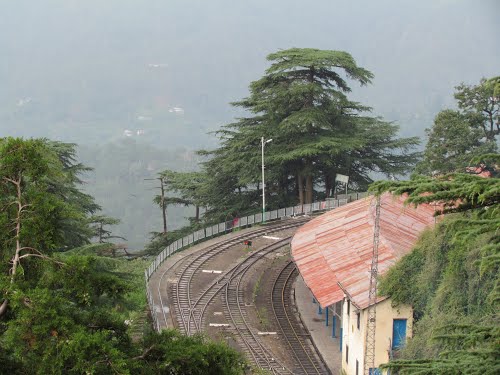Shimla Railway Station, Kalka–Shimla Railway. The Kalka–Shimla Railway is a 2 ft 6 in (762 mm) narrow gauge railway in North-West India travelling along a mostly mountainous route from Kalka to Shimla. It is known for dramatic views of the hills and surrounding villages. The Kalka–Shimla Railway was built in 1898. to connect Shimla, the summer capital of India during the British Raj, with the rest of the Indian rail system. At the time of construction 107 tunnels and 864 bridges, were built throughout the course of the track. The Chief Engineer of the project was H.S. Herlington.
The locomotives used during the earlier period were manufactured by Sharp, Stewart and Company, and larger locomotives were introduced which were manufactured by Hunslet Engine Company. The diesel and diesel-hydraulic locomotives were started operation in 1955 and 1970 respectively. The railway was declared a heritage by the Himachal Pradesh government in 2007, and in 2008 it became a UNESCO World Heritage Site alongwith the other Mountain Railways of India.
History
Shimla was settled by the British shortly after the first Anglo-Gurkha war, and is located at 2,169 m in the foothills of the Himalayas. By the 1830s, Shimla had already developed as a major base for the British. It became the summer capital of British India in 1864, and was also the headquarters of the British army in India. Prior to construction of the railway, communication with the outside world was via village cart.
The 1,676 mm broad gauge Delhi-Kalka line opened in 1891. The Kalka–Shimla Railway was built on 610 mm narrow gauge tracks by the Delhi-Ambala-Kalka Railway Company beginning in 1898. The estimated cost was Rs 86,78,500 but the cost doubled during construction. The 96.54 km line opened for traffic on 9 November 1903. It was inaugurated by Viceroy of India Lord Curzon.
Because of the high capital and maintenance costs and peculiar working conditions, the Kalka–Shimla Railway was allowed to charge higher fares than on other lines. However, the company was still not profitable and was purchased by the government on 1 January 1906 for Rs 1,71,07,748. In 1905 the line was regauged to 2 ft 6 in (762 mm) to conform to standards set by the Indian War Department.
This route passes through a city named Solan, which is also known as mini Shimla. A festival celebrating the goddess Shoolini Devi, after which the city is named, is held each summer in June.
In 2007, the government of Himachal Pradesh declared the railway a heritage property. For about a week starting on 11 September 2007, an expert team from UNESCO visited the railway to review and inspect it for possible selection as a World Heritage Site. On 8 July 2008, the Kalka–Shimla Railway became part of the World Heritage Site Mountain Railways of India. alongside Darjeeling Himalayan Railway, Nilgiri Mountain Railway, and Chhatrapati Shivaji Terminus.

